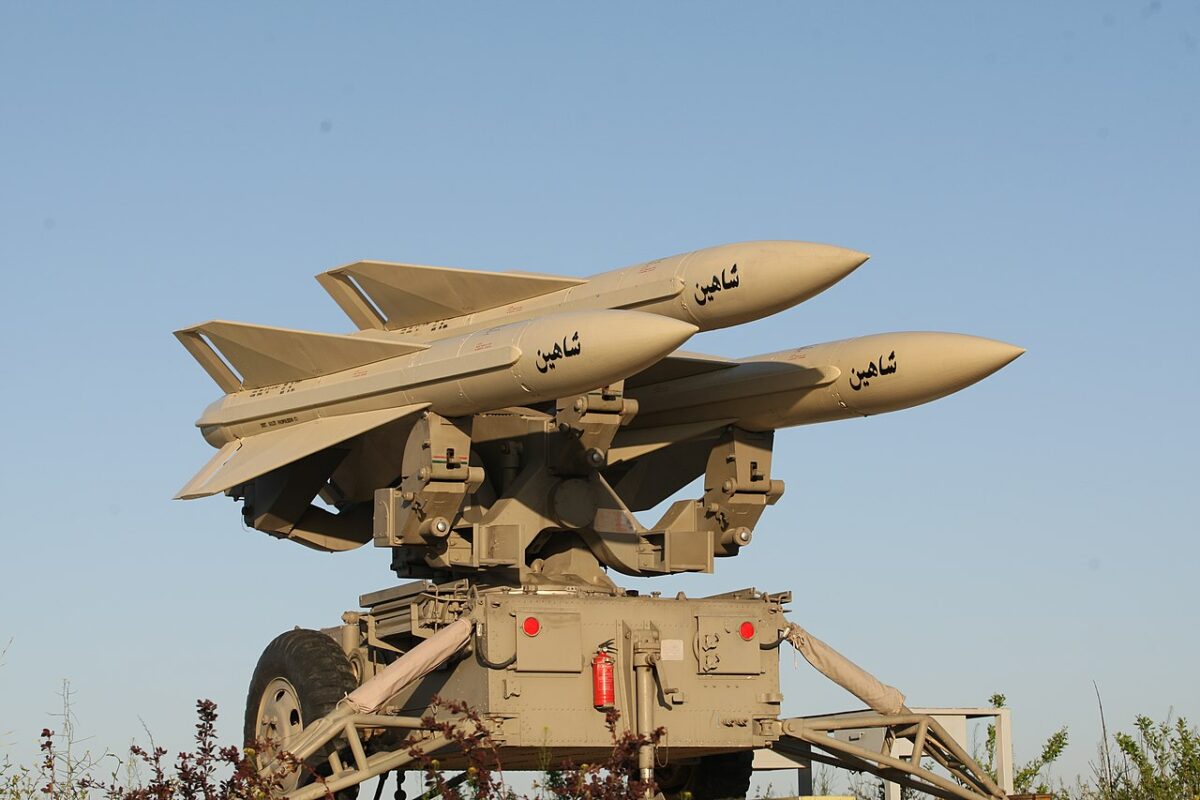(JNS) Iran is gradually assembling the building blocks necessary to construct ballistic missiles with very long ranges, an Israeli missile and space expert has said, adding that Islamic Republic’s elite military Islamic Revolutionary Guard Corps (IRGC) “can reach space.”
Iran’s space program uses ballistic-missile technology to launch spy satellites into orbit around the earth. It is seen by observers as a guise for the development of future intercontinental Iranian ballistic missiles, which could threaten Europe in the first stage and potentially North America in later development stages.
Tal Inbar, a leading Israeli missile and space expert, told JNS in recent days that despite the existence of an Iranian civilian space program, which operates alongside a space division run by the IRGC (first unveiled in 2020), the IRGC is the entity producing all of the components for both space programs.
Inbar, a former director of the UAV Research Center at Israel’s Fisher Institute for Air and Space Strategic Studies, and co-founder of the Ilan Ramon Space Conference, said “when one examines what the IRGC is doing, it is possible to see the various technologies being developed for long-range missiles, such as solid propellant. They have the building blocks to build an intercontinental ballistic missile.”
On March 8, the IRGC launched the Noor 2 military satellite into orbit, according to Iranian state media.
Noor (meaning “light” in Persian) 2 is orbiting at an altitude of 500 kilometers (311 miles), Reuters cited Iranian media as saying. Noor 1, Iran’s first military satellite, was launched in April 2020, at an orbit of 425kilometers (265 miles) above the Earth.
The Space Commander of IRGC’s Aerospace Force, Ali Jafarabadi, said after the launch of Noor 2 that Iran will send a series of military satellites into orbit over the coming years, saying, “The space program of the country, of which we are a part, is to stabilize various scientific, research and defense satellites in low-earth orbit and then reach orbit of 36,000 kilometers above land.”
Reuters noted that the United States military “says the same long-range ballistic technology used to put satellites into orbit could also allow Tehran to launch longer-range weapons, possibly including nuclear warheads.”
A three-staged carrier, dubbed Qased (“messenger”), using both liquid and solid fuel, launched Noor 2 into space from the Shahroud space port in Northern Iran.
“Until Noor 1, there was no official declaration by Iran that the IRGC has a space division,” said Inbar. “The IRGC, which is listed as a Foreign Terrorist Organization by the U.S., has a space division. I’m not aware of other terror organizations that can reach space,” he added.
Addressing the connection between Iran’s space launchers and its missile program, Inbar assessed that the long-range technology will not “immediately result in the production of missiles with warheads, but this isn’t very far away either.”
Iran’s Shahab 3 ballistic missile, which has variants that can reach 2,000 kilometers (1,242 miles), capable of hitting Israel, received additional stages in order to extend its ranges, noted Inbar.
“At the end of the day, all missiles, including space launchers, are built by Iran’s military industries, and all of the industries belong to the IRGC,” he said. “So even if the Iranian space agency says it is civilian, it goes to the IRGC for components and approval. The connection was always there to begin with. It is of interest that the Iranians officially declared the existence of a separate IRGC space agency.”
As of now, there are “no limitations” on Iran’s missile and space programs, warned Inbar.
‘Five failed launches in a row’
The United States has pursued a mixed policy of sanctions when it comes to Iranian missile developers.
On March 30, the U.S. Department of the Treasury sanctioned what it said was “an Iran-based procurement agent and his network of companies that procured ballistic-missile propellant-related materials for the Islamic Revolutionary Guard Corps Research and Self Sufficiency Jihad Organization (IRGC RSSJO), the unit responsible for the research and development of ballistic missiles, as well as Iran’s Parchin Chemical Industries (PCI), an element of Iran’s Defense Industries Organization (DIO).”
In 2021, the U.S. Treasury Department delisted Iranian entities that had been previously sanctioned by the Trump administration for being active in Iran’s ballistic-missile program.
In 2019, America placed sanctions on the Iranian civilian space agency and two related research organizations, accusing Tehran of using the entities to advance its ballistic-missile program.
“Perhaps more sanctions will be placed in the future. Of course, Iran can attempt to claim that its development of long-range missile technology is for a legitimate civilian space program,” said Inbar.
As for the satellites themselves, Inbar said their capability is highly limited at this time. Still, he cautioned, if Iran directs further budgets and conducts determined research and development, it can improve in this sector as well.
In December, an Iranian attempt to launch three payloads into orbit failed after the rocket was unable to reach the required speed, Reuters cited an Iranian defense ministry spokesman as saying. “There have been five failed launches in a row for the Simorgh program, another satellite-carrying rocket. A separate fire at the Imam Khomeini Spaceport in February 2019 also killed three researchers, authorities said at the time,” said the report.
“The more that Iran develops long-range missiles, the easier the case of Israel, Saudi Arabia or the United Arab Emirates gets when presented to the world,” said Inbar. “These missiles can target Europe, and later beyond, as their range is extended.”

